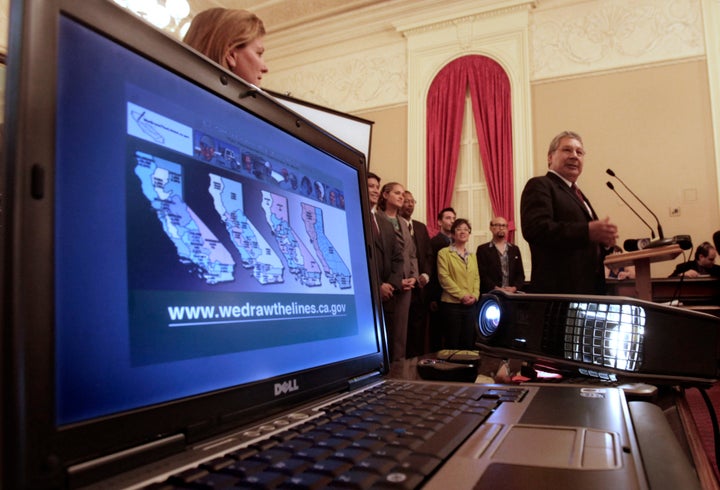
Story comes courtesy of California Watch.
By Matt Drange
The first draft of the new redistricting maps were unveiled by the California Citizens Redistricting Commission today, opening a two-month period of public hearings the group plans to use to modify district lines.
An issue that in the past has been a source of contention among lawmakers -- the task of drawing the more than 100 Congressional, Assembly, state Senate and Board of Equalization districts -- now rests solely with the newly formed commission. After some discussion on how many state Senate and Assembly districts to group together in what is commonly referred to as "nesting," the 14-member commission voted unanimously to approve the draft Friday.
Chairman Gabino Aguirre said the maps were merely the first of three drafts the group will produce, adding that he intends to place no cap on the number of changes made to the next draft, due out July 7. Aguirre said he expects to receive more public input on the process in the coming weeks, a major goal when voters passed what became known as the Voters First Act in 2008. The measure sought to realign communities and make district seats more competitive.
"Based on the interest we've had to this point, I fully expect to be getting more input," Aguirre said, adding that he's received hundreds of e-mails per day on the subject. Aguirre said the group finalized the first draft of the maps Thursday night and was optimistic that it would meet its Aug. 15 deadline to submit the maps to the secretary of state for approval.
"Absolutely," he said. "We've made a commitment to follow through with this."
A major component of the process is the 11 public hearings the commission will hold across the state in the next month. So far, the group has held more than two dozen hearings, fielding comments from more than 1,500 people."Our No. 1 priority at this point is to give every single person in California a political voice," Aguirre said. "That's why we're going back to these areas again and again."
While much may change in the revised versions of the maps, early implications point to a future shakeup for both parties. Sacramento-based Redistricting Partners, led by political consultant Paul Mitchell, put out its own version of the maps Friday, with a preliminary breakdown of voter registration in districts, many of which could change significantly.
Other highlights included Assembly districts with multiple incumbents living in them, as well as others with none. The changes ultimately will lead to greater competition, said Dan Schnur, director of the Jesse M. Unruh Institute of Politics at the University of Southern California. Schnur said a reduction in the number of strongholds could have significant implications for the future, potentially reducing the bipartisan stalemates that have plagued California most of this year.
"If this redistricting turns out the way it could, you're going to make it a lot easier to get things done in Sacramento," he said Thursday, adding that while it is impossible to make all of the more than 100 districts competitive, the addition of a dozen or so relatively competitive districts would be a huge benefit. "That could fundamentally change things in the future," he said.